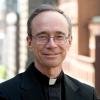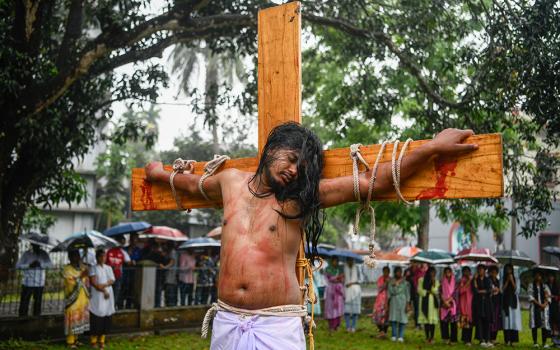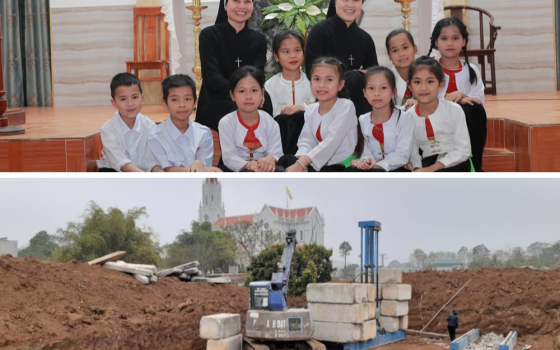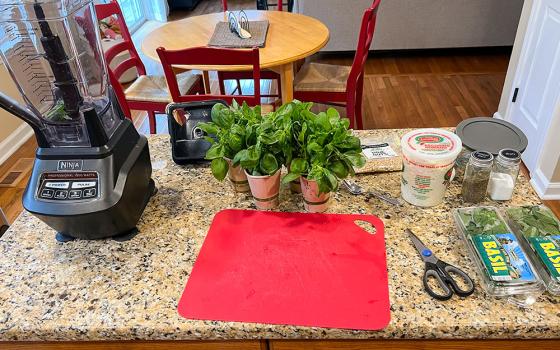Whenever a bishop dies or approaches 75, the age of retirement, I get phone calls from local journalists asking who I think will be his successor. I immediately tell them, "I don't play Jimmy the Greek," because the honest answer is I don't have a clue. Those that know don't talk; those who don't know speculate.
The same is true for predicting who will be made cardinals, except here, guessing is a little bit easier because there are certain positions in the Vatican that are usually held by cardinals and there are certain archdioceses that are usually headed by cardinals.
Who might be created a cardinal at the next consistory to be held Feb. 22?
To answer that question, I consulted Salvador Miranda, the leading U.S. expert on cardinals and creator of a digital gold mine on the College of Cardinals. He is not foolish enough to make predictions, but he does have a list of those who have a better chance of being appointed based on historical experience -- they lead Vatican offices or archdioceses that have been headed by cardinals in the past.
The problem is that the list contains 23 names where there are only 14 vacancies in the College of Cardinals, which by law is limited to 120 cardinals under the age of 80. Two more cardinals could easily be created since two more cardinals turn 80 in March. Pope Francis could also follow the example of Blessed John Paul II, who raised the size of the College of Cardinals to 135 in 2001. Once a cardinal turns 80, he can no longer vote for a new pope.
The list shows the difficulties faced by Pope Francis if he is going to keep his selection to only 14.
First there are those in the Vatican.
1. Pietro Parolin, titular archbishop of Acquapendente, secretary of state.
2. Gerhard Ludwig Müller, archbishop-bishop emeritus of Regensburg, prefect of the Congregation for the Doctrine of the Faith.
3. Lorenzo Baldisseri, titular archbishop of Diocleziana, secretary general of the Synod of Bishops.
4. Beniamino Stella, titular archbishop of Midila, prefect of the Congregation for the Clergy.
5. Jean-Louis Bruguès, archbishop-bishop emeritus of Angers, France, archivist and librarian of the Holy Roman Church.
Granted Pope Francis' criticisms of careerism and the papal court, appointing one-third of the cardinals from Curia would be a surprise. My preference would be that none of them be made cardinals, as I have explained elsewhere.
Almost certainly red hats will go to the secretary of state and the two prefects. Baldisseri was secretary of the conclave, and traditionally, that person has been promoted to cardinal. Francis in fact gave his cardinal's biretta to Baldisseri in the conclave after his election. On the other hand, Sandro Magister reports that Bruguès had a run-in with Bergoglio over the appointment of the rector of the Catholic University of Buenos Aires, Argentina, when Bruguès was at the Congregation for Education. Not a good career move.
Next, we have the archbishops from sees where their cardinal predecessor is either dead or over 80.
6. Louis Raphaël I Sako, patriarch of Babylon of the Chaldeans, Iraq.
7. Manuel José Macário do Nascimento Clemente, patriarch of Lisbon, Portugal.
8. Orani João Tempesta, O. Cist., archbishop of São Sebastião de Rio de Janeiro.
9. Murilo Sebastião Ramos Krieger, S.C.I., archbishop of São Salvador da Bahia and primate of Brazil.
10. Mario Augusto Poli, archbishop of Buenos Aires, primate of Argentina.
11. Sviatoslav Schevchuk, archbishop major of Kyiv-Halyc, Ukraine.
12. Ricardo Ezzati Andrello, S.D.B., archbishop of Santiago de Chile, Chile.
13. Cesare Nosiglia, archbishop of Turin, Italy.
14. Francesco Moraglia, patriarch of Venice, Italy.
15. Peter Takeo Okada, archbishop of Tokyo.
16. Braulio Rodríguez Plaza, arzobispo de Toledo, primate of Spain.
17 Andrew Yeom Soo jung, archbishop of Seoul, South Korea.
18. Diarmuid Martin, archbishop of Dublin and primate of Ireland.
19. Philippe Ouédraogo, archbishop of Ouagadougou, Burkina Fasso.
20. Samuel Kleda, archbishop of Douala, Cameroon.
21. Gabriel Mbilingi, C.S.S., archbishop of Lubango, Angola.
22. Berhane-Yesus Demerew Souraphiel, C.M., archbishop of Addis Ababa, Ethiopia.
23. Óscar Julio Vian Morales, S.D.B., archbishop of Guatemala.
Note five of them are from Latin America. I would be willing to bet the farm on the new archbishop of Buenos Aires becoming a cardinal. As I mentioned in an earlier column, I would not be surprised by more than five red hats for Latin America; after all, this is the area of the world Francis knows best.
The difficulty of predicting who will become cardinals is shown by the fact that Miranda expanded his list to include "possible but not probable" candidates. From Latin America, these include:
24. Rogelio Cabrera López, archbishop of Monterrey, Mexico.
25. Nicolás Cotugno Fanizzi, S.D.B., archbishop of Montevideo, Uruguay.
26. Eustaquio Pastor Cuquejo Verga, C.SS.R., archbishop of Asunción, Paraguay.
27. Roberto Octavio González Nieves, O.F.M., archbishop of San Juan de Puerto Rico, Puerto Rico.
28. Leopol LeJosé Brenes Solórzano, archbishop of Managua, Nicaragua.
29. Fausto Justo Trávez Trávez, O.F.M., archbishop of Quito, Ecuador.
Additional possibilities from Africa include:
30. Ibrahim Isaac Sidrak, patriarch of Alexandria of the Copts, Egypt.
31. Dieudonné Nzapalainga, C.S.Sp., archbishop of Bangui, Central African Republic.
Asia:
32. Pierre (Phêrô) Nguyễn Van Nhơn, archbishop of Hanoi, Vietnam.
33. Joseph Coutts, archbishop of Karachi, Pakistan.
34. Ignace Youssif III Younan, patriarch of Antioch of the Syrians, Syria.
35. Odon Marie Arsène Razanakolona, archbishop of Antananarivo, Madagascar.
Europe:
36. Vincent Nichols, archbishop of Westminster, England.
37. Juan José Asenjo Pelegrina, archbishop of Sevilla, Spain.
38. André-Mutien Léonard, archbishop of Mechlen-Brussels, Belgium
39. Hans-Joseph Becker, archbishop of Paderborn, Germany.
40. Georges Pontier, archbishop of Marseille, France.
41. Leo W. Cushley, archbishop of Saint Andrews and Edinburgh, Scotland.
42. Tadeusz Kondrusievicz, archbishop Minsk-Mohilev, Belarus.
43. Józef Kowalczyk, archbishop of Gniezno and primate of Poland.
44. Zbigņevs Stankevičs, archbishop of Riga, Latvia.
45. Sigistas Tamkevičius, S.J., archbishop of Kaunas, Lithuania.
46. Philip Tartaglia, archbishop of Glasgow, Scotland.
47. Gintaras Linas Grušas, archbishop of Vilnius, Lithuania.
Oceania:
48. John Atcherly Dew, archbishop of Wellington, New Zealand.
And finally, North America:
49. Christian Lépine, archbishop of Montreal, Canada.
50. Gérald Cyprien Lacroix, I.S.P.X., archbishop of Quebec, Canada.
51. Allan Henry Vigneron, archbishop of Detroit, United States of America.
52. William Edward Lori, archbishop of Baltimore, United States of America.
Note he does not even list Archbishops Charles Chaput of Philadelphia and Horacio José Gómez Velasco of Los Angeles, whom he considers "long shots" since their predecessors are still under 80 years of age.
A list very much like this has been pondered over by the pope as he makes his selection of new cardinals. He is faced with a lot of tough choices. But as Miranda acknowledges, "with Pope Francis, surprises are becoming the norm," so anything could happen.
[Jesuit Fr. Thomas Reese is a senior analyst for NCR. His email address is treesesj@ncronline.org. Follow him on Twitter: @ThomasReeseSJ.]



